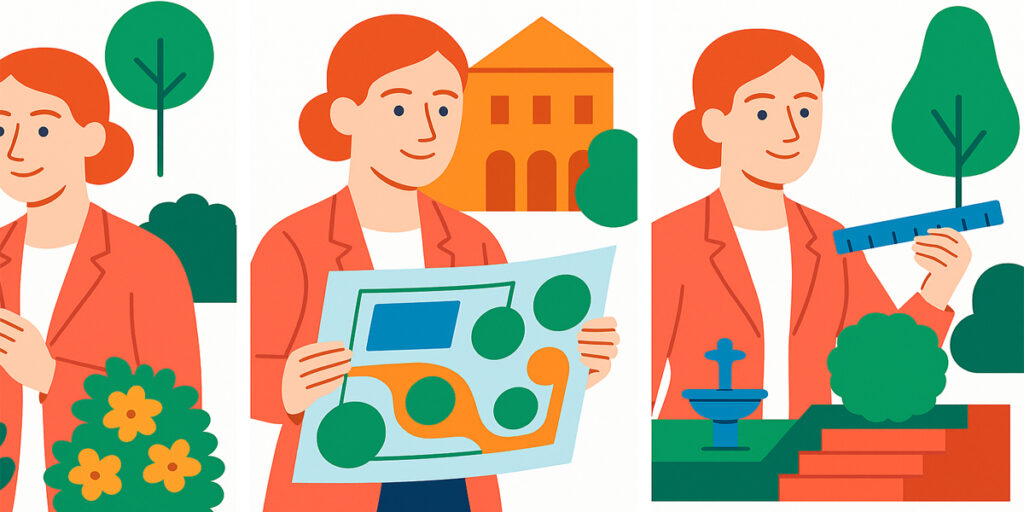She moved through the world like a painter with a living canvas. Her brush was the trowel, her palette was sunlight and soil, and her masterpiece was never quite finished—because it grew. Gertrude Jekyll was no ordinary gardener. She was an artist of nature, a composer of blooms and branches, whose vision forever reshaped the soul of English gardening.
She was born with eyes that didn’t just see—she noticed. The way shadows danced between lavender and stone. The subtle rhythm of blossoms in a breeze. As a child, she wandered through woodlands and meadows, her senses drinking in the quiet poetry of wildflowers and fallen leaves. While others played games or raced through their lessons, she observed the curve of petals, the rustle of wind through silver birch, the golden hush before twilight. That sensitivity never faded.
Gertrude trained as a painter, and her early studies sharpened her sense of form, tone, and above all—color. But time and her eyes had other plans. When her vision began to blur, when fine brushes could no longer keep up with her mind’s precision, she did not grieve. She turned to the land. What had once been canvas became border. What had once been pigment became petals. The discipline of art did not leave her—it simply changed form. And through that transformation, something timeless was born.
Her gardens were not just arrangements—they were symphonies. Every plant had its place, not by accident or trend, but because she understood how color breathes beside color, how texture can soothe or stir, how a bloom in May must anticipate the hush of August. She didn’t plant to impress. She planted to evoke a mood, to invite pause, to let memory and emotion bloom among the foliage. Gardens, to her, were not just decorations around a home—they were living stories.
At a time when many gardens were stiff, symmetrical, and formal, she dared to make them emotional. She painted with drifts of delphiniums and cascades of foxgloves. She softened walls with the spilling laughter of climbing roses. She created paths that led not just to doorways, but to dreams. Her use of soft pastels in one corner, vibrant clashes in another, and the quiet rustle of silver-foliaged plants near a seat—these were not happy accidents. They were the fingerprints of a woman who knew that nature, when guided by heart and knowledge, could stir the soul more deeply than any portrait.
She collaborated with architects, most famously shaping grounds around the homes designed by Edwin Lutyens. Their partnership became legend—he created forms of stone, she softened them with leaf and bloom. Their work together shaped a new language for garden design, one that felt both grand and intimate, structured and free. Gertrude Jekyll didn’t design gardens for royalty or applause. She designed them for those who understood how to feel.
Her hands grew strong in the soil, her back bowed not with age but with devotion. She wasn’t a woman of society balls or salons. She was a woman of the earth. When she spoke, it was with quiet authority; when she wrote, it was with the precision of someone who loved the craft as much as the outcome. Her books became guides for generations—manuals not just on how to plant, but on how to see.
Color theory, which had once belonged to the walls of art studios, now walked freely in her herbaceous borders. She showed the world that marigold and mauve could sing together, that greys and greens could frame a golden burst, that harmony could be coaxed from chaos with the right hand and eye. Through her work, color was no longer something merely to admire—it was something to live within.
Her influence was not loud, but it was lasting. English gardens, once strict and controlled, began to breathe with romance, to dance with subtlety. The wild garden, the cottage border, the soft curving paths through flowering meadows—these became signatures of a movement she gently ignited. And even now, in quiet corners of the countryside or behind city walls, her spirit lingers where lavender leans beside stone, where irises bloom in gentle succession.
Gertrude Jekyll taught us that design is not dominance—it is conversation. She listened to the land. She respected its rhythm. And in return, it revealed its magic to her.
She never sought the spotlight, and yet her legacy glows brighter with time. Not because of fame, but because of feeling. Her gardens still whisper stories. Her borders still cradle memories. Her words still guide the hand of those who dare to plant not for show, but for soul.
She was a quiet revolutionary. An artist of scent and season. A woman who gave the world beauty not to keep, but to wander through, to return to, to be changed by.
Even now, when a garden blooms with unexpected softness, when petals speak in a language deeper than words, somewhere deep beneath the roots, her name is written in wildflower script: Gertrude Jekyll.




















